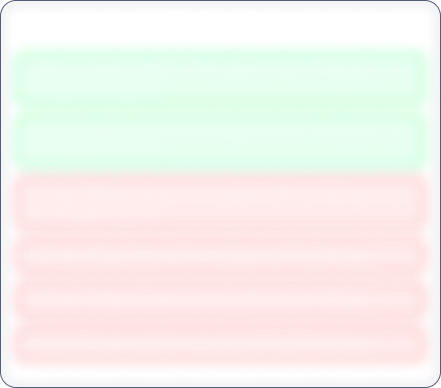Year End Sale 50% off
Indo Farm Equipment

No Data Available
Investor Sentiment
Indo Farm Equipment Share price and Fundamental Analysis
Key Metrics
Included In
Stock Returns
Stock Heatmap

No Stocks
Smart Score

Unlock Smart Score
See Detailed Analysis & Insights


Unlock Insights
See Detailed Analysis & Insights
Technicals
Returns Calculator
If you would have investedResearch Report
No Research Report
Corporate Action
Financials
Key Ratios
ROE
Avg ROE (3 Yrs) : NaN%
ROCE
Avg ROCE (3 Yrs) : NaN%
ROA
Avg ROA (3 Yrs) : NaN%
NPM
Avg NPM (3 Yrs) : NaN%
Dividend History
5 Year FactSheet
Documents

No Data Available
News
Indo Farm Equipment Management and History
Company Management


Unlock Management Data
See Detailed Analysis & Insights
Company History
Indo Farm Equipment Limited, was originally incorporated as 'Welcut Tools Private Limited' on October 05, 1994 as a Private Limited Company with the Registrar of Companies, Punjab, H.P. & Chandigarh. Subsequently, name of the Company was changed to Welcut Industries Private Limited vide Certificate dated February 21, 1995. Further, the Company converted into a Public Company and the name was changed to Indo Farm Equipment Limited dated July 05, 1999; again to Indo Farm Tractors & Motors Limited on October 30, 2003 and thereafter, was again changed to Indo Farm Industries Limited dated December 18, 2007. Consequently, name of the Company was changed to Indo Farm Equipment Limited on November 04, 2009 vide fresh Certificate of Incorporation by Registrar of Companies, Punjab, Himachal Pradesh and Chandigarh.
The Company is a fully integrated manufacturer of world class Tractors, Pick & Carry Cranes and other farm equipments such as harvester combines, rotavators and other related spares and components. The Company has manufacturing facilities in Baddi, Himachal Pradesh which includes a captive foundry unit and dedicated machine shop, fabrication and assembling units for Tractors, pick & Carry Cranes and other equipments. Their facilities are equipped with induction furnaces, pneumatic molding machines, automatic molding line, sand plant, fully equipped Metallurgy and Sand Testing Laboratory, Machining Center, Gear Shop, Press Shop, Fabrication Shop, Paint Shop, Assembly unit, Quality Room & Utility room.
The Company acquired Engine technology and started manufacturing operations of Tractor and components in year 2000. In 2001, it launched Indo farms first tractor model 2050 DI; launched 3-series tractor range 3065DI, 3050DI, 3040DI and 3035DI in 2005; in 2006, it started production of in-house captive foundry division and in 2007, it introduced Pick & Carry Cranes. In 2009, it commenced production of Indo Power Green Gensets; started production of harvester combines and also launched 75HP and 90 HP tractors in 2010.
In 2011, the Company initiated production of new generation crane model 16FN; launched Indo Power Pick and Carry cranes with the capacity of 18 tons and 23 tons in 2014; started production of 26 HP 4x4 orchard tractors in 2015. Later on, the Company incorporated its subsidiary, Barota Finance Limited NBFC for providing retail financing for their tractor in 2017. It launched Indo power 30 FN crane in 2019; launched Indo farm 20HP and 100HP tractor in 2020; launched 1026e tractor model in 2021; launched Indo 3055 DI HT and 3060.DI HT tractor in 2022 and launched Indo farm 3055 NV PLUS, 3065DI, 3075DI IN BS-IV and Indo Power pick and carry cranes of FN series in 2023.
The Company is proposing a Public Offer aggregating 14,000,000 comprising 10,500,000 Equity Shares through Fresh Issue and 3,500,000 Equity Shares through Offer for Sale.
Indo Farm Equipment Share Price
Indo Farm Equipment share price reflects investor sentiment toward the company and is impacted by various factors such as financial performance, market trends, and economic conditions. Share price is an indicator which shows the current value of the company's shares at which buyers or sellers can transact.
Indo Farm Equipment Market Cap
Market capitalization of Indo Farm Equipment indicates the total value of its outstanding shares. Marketcap is calculated by multiplying share price and outstanding shares of the company. It is a helpful metric for assessing the company's size and market Valuation. It also helps investors understand how Indo Farm Equipment is valued compared to its competitors.
Indo Farm Equipment PE Ratio
Indo Farm Equipment PE ratio helps investors understand what is the market value of each stock compared to Indo Farm Equipment 's earnings. A PE ratio higher than the average industry PE could indicate an overvaluation of the stock, whereas a lower PE compared to the average industry PE could indicate an undervaluation.
Indo Farm Equipment PEG Ratio
The PEG ratio of Indo Farm Equipment evaluates its PE ratio in relation to its growth rate. A PEG ratio of 1 indicates a fair value, a PEG ratio of less than 1 indicates undervaluation, and a PEG ratio of more than 1 indicates overvaluation.
Indo Farm Equipment ROE (Return on Equity)
Return on Equity (ROE) measures how effectively Indo Farm Equipment generates profit from shareholders' equity. A higher ROE of more than 20% indicates better financial performance in terms of profitability.
Indo Farm Equipment ROCE (Return on Capital Employed)
Return on Capital Employed (ROCE) evaluates the profitability of Indo Farm Equipment in relation to its capital employed. In simple terms, ROCE provides insight to investors as to how well the company is utilizing the capital deployed. A high ROCE of more than 20% shows that the business is making profitable use of its capital.
Indo Farm Equipment Total Debt
Total debt of Indo Farm Equipment shows how much the company owes to either banks or individual creditors. In simple terms, this is the amount the company has to repay. Total debt can be a very useful metric to show the financial health of the company. Total debt more than equity is considered to be a bad sign.
Indo Farm Equipment Debt to Equity Ratio
The Debt-to-Equity (DE) ratio of Indo Farm Equipment compares its total debt to shareholders' equity. A higher Debt to Equity ratio could indicate higher financial risk, while a lower ratio suggests that the company is managing its debt efficiently.
Indo Farm Equipment CAGR (Compound Annual Growth Rate)
CAGR shows the consistent growth rate of Indo Farm Equipment over a specific period, whether it is over a month, a year, or 10 years. It is a key metric to evaluate the company’s long-term growth potential. Main metrics for which CAGR is calculated are net sales, net profit, operating profit, and stock returns.
Indo Farm Equipment Technical Analysis
Technical analysis of Indo Farm Equipment helps investors get an insight into when they can enter or exit the stock. Key components of Indo Farm Equipment Technical Analysis include:
Support Levels (S1, S2, S3)
There are usually multiple support levels, but the main support levels for a stock are S1, S2, S3. Support levels indicate price points where stock might get support from buyers, helping the stock stop falling and rise.
Resistance Levels (R1, R2, R3)
There are usually multiple resistance levels, but the main resistance levels for a stock are R1, R2, R3. Resistance levels represent price points where Indo Farm Equipment shares often struggle to rise above due to selling pressure.
Indo Farm Equipment Dividends
Dividends refer to the portion of the company’s profits distributed to its shareholders. Dividends are typically paid out in cash and reflect Indo Farm Equipment ’s financial health and profitability.
Indo Farm Equipment Bonus Shares
Bonus shares are usually given by companies to make the stock more affordable, increase liquidity, boost investor confidence, and more.
Indo Farm Equipment Stock Split
Stock split increases the number of its outstanding shares by dividing each existing share into multiple shares. When the company offers a stock split, the face value of the stock reduces in the same proportion as the split ratio.
Indo Farm Equipment Financials
The financials of Indo Farm Equipment provide a complete view to investors about its net sales, net profit, operating profits, expenses, and overall financial health. Investors can analyze financial data to assess the company’s stability and also understand how the company has been growing financially.
Indo Farm Equipment Profit and Loss Statements
The profit and loss statement of Indo Farm Equipment highlights its net sales, net profit, total expenditure, and operating profits in the current financial year. This Profit and Loss statement is crucial for evaluating the profitability and financial stability of Indo Farm Equipment .
Indo Farm Equipment Balance Sheet
The balance sheet presents a snapshot of Indo Farm Equipment ’s assets, liabilities, and equity of shareholders, providing insights into the financials of the company.
Indo Farm Equipment Cashflow Statements
Cashflow statements track the company's cash inflows and outflows over a period. It is an essential tool for understanding how well the company manages its liquidity and finances.


